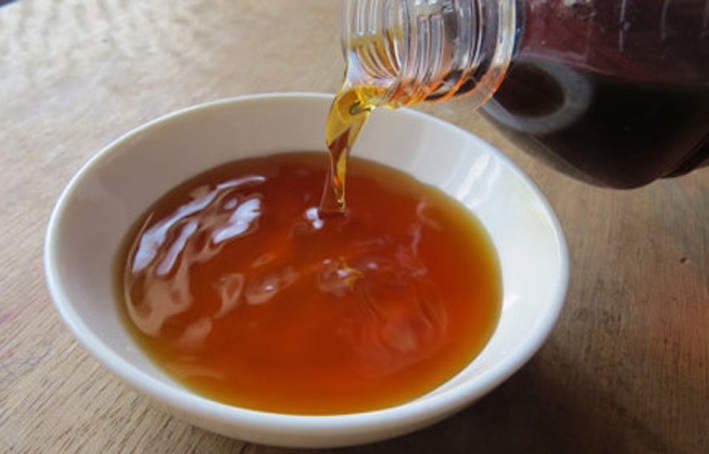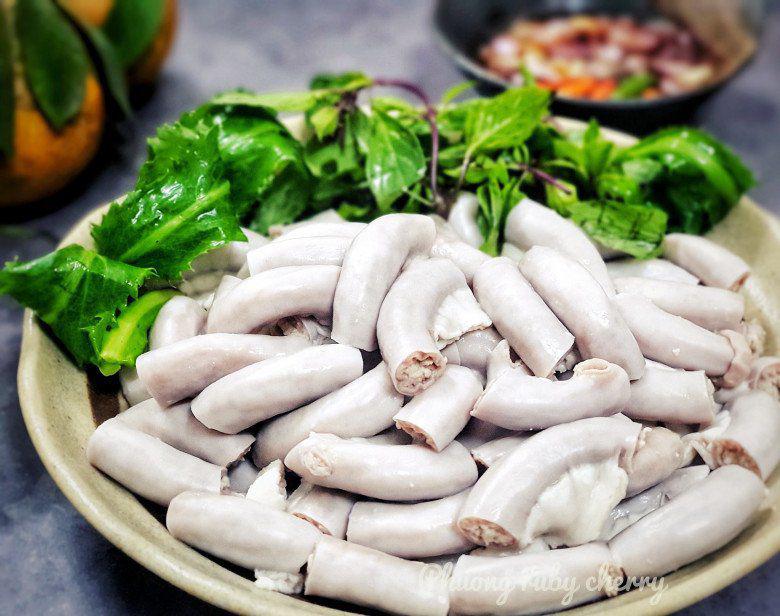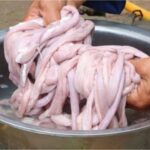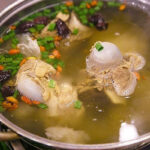While pig intestines are delicious, the preparation process can be off-putting to many. Not everyone knows how to get rid of the unpleasant odor or how to boil them to achieve that perfect, crispy texture. So, let’s learn from the chef’s secrets on cleaning, preparing, and boiling intestines to get that desirable white and crispy texture.
First, to make delicious boiled pig intestines with that desirable white and crispy texture, selecting the right intestines is crucial. The quality of the intestines determines the final dish’s taste. The best part of the intestines is the first section, as it is both crispier and thicker than the other parts. However, if you can’t get your hands on that part, opt for intestine sections that look plump and feel firm to the touch. The fluid inside should be milky white. Avoid thin, flat sections with yellowish insides, as they tend to be bitter and tough.
In general, it’s best to go to the market early in the morning to get the freshest intestines from recently slaughtered pigs.
Now, let’s get started on processing the intestines.
Eliminating the Unpleasant Odor from the Intestines
There are multiple methods to eliminate the odor and clean the intestines, but one lesser-known technique involves using fish sauce.

This method is simple: use a syringe to draw and inject fish sauce into the intestines, then gently massage the inside fluid out. Be gentle and avoid over-massaging, as this can remove too much fluid, resulting in tough intestines after boiling. Repeat this process 2-3 times, always being gentle. Afterward, rinse the intestines twice with clean water. The fish sauce effectively eliminates the unpleasant odor.
If you don’t want to use fish sauce, you can use salt and a little lemon juice instead. Simply rub the intestines with a mixture of salt and lemon juice, gently massage to remove the inside fluid, and then rinse several times with cold water. Over-rubbing the intestines can make them tough and less tasty.

Boiling the Intestines to Achieve a White and Crispy Texture
Fill a pot with water, add a crushed ginger root and a few stalks of scallions, and bring it to a boil. Then, add the cleaned intestines. Once the water returns to a boil, continue cooking for 2-3 minutes. The intestines should look plump. The total cooking time, from adding the intestines to the pot to removing them, should be around 7-10 minutes. Overcooking will make the intestines tough and less appetizing. If you’re cooking a large quantity of intestines, use a bigger pot and more water to ensure even cooking.
Before the intestines are done cooking, prepare a bowl of cold water and squeeze half a lemon into it. When the intestines are ready, remove them from the pot and place them in the lemon water. Ensure that the water covers the intestines entirely; if any part is exposed, it may turn dark. This process helps achieve a whiter and crispier texture.
Alternatively, you can boil the intestines using the following method:
– Prepare a bowl of ice water with a little lemon juice.
– Boil a pot of water with some salt, ginger, and optional scallions for added aroma. Then, add the intestines and boil for 3 minutes before removing them and placing them in the ice water.
– Repeat this process of boiling and immersing in ice water three times to get white, crispy, and tender boiled pig intestines without toughness.
– Finally, remove the intestines from the water and cut them into bite-sized pieces.

Good luck, and happy cooking!






































